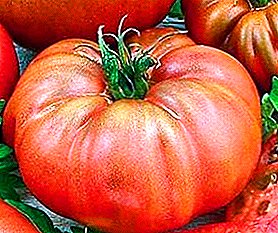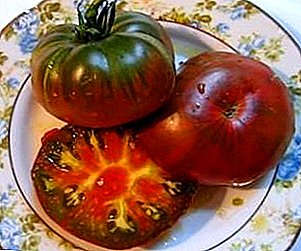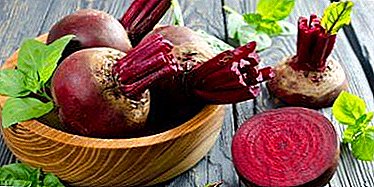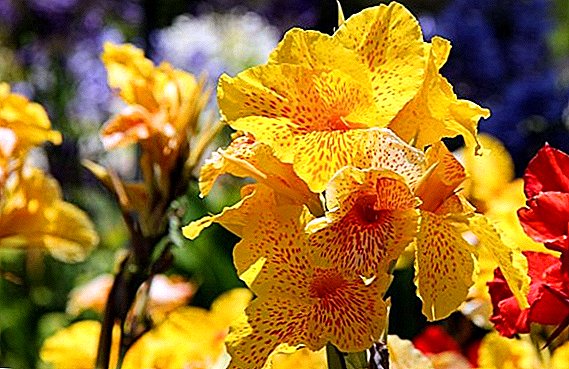 Ashwagandha plant is widely popular in India. About it is also known from us, in pharmacies you can buy biological active additives based on it. But not everyone knows about the benefits of this unique plant that can prolong youth, increase energy, improve reproductive abilities, strengthen the nervous system.
Ashwagandha plant is widely popular in India. About it is also known from us, in pharmacies you can buy biological active additives based on it. But not everyone knows about the benefits of this unique plant that can prolong youth, increase energy, improve reproductive abilities, strengthen the nervous system.
Description
Ashwagandha (Withania somnifera) - This is a low-rise (from 30 centimeters to a meter) perennial shrub with branching stems and dark green leaves in the shape of an oval. The flowers of the plant are small white with a greenish tint, discreet in appearance, resemble a bell with curved petals. The flowers are self-pollinating, they later turn into red filled berries, which are also covered with a reddish glistening cup that resembles a flashlight.  Ashwagandha seeds are yellowish orange, round and flat, their size is up to two millimeters. The roots of the plant are thin, fairly smooth, capable of growing up to 30-40 centimeters in length. The roots of ashwagandas are the most valuable component of this plant, they help the human body to be strong.
Ashwagandha seeds are yellowish orange, round and flat, their size is up to two millimeters. The roots of the plant are thin, fairly smooth, capable of growing up to 30-40 centimeters in length. The roots of ashwagandas are the most valuable component of this plant, they help the human body to be strong.
Did you know? Ashwagandha is translated from Sanskrit as "horse-smelling" (not only because of the peculiar smell, but also because of the power that this plant can give to a person).
Ashwagandas are considered the ancestral home of North Africa, and can also be found throughout Iraq, Western India, North America, the Mediterranean lands and the Middle East. For decorative purposes, it has gained popularity in China. It grows in sufficient quantities in southern Asia and south-eastern Africa.
Medicinal value have roots and fruits of the plant. There are no recommendations for the implementation of the collection of ashwagandas, but only trained herbalists collect the plant, adhering to the traditions (Ayurvedic), exposing the roots to mixing with the sap of the plant so as to obtain more healing qualities.  Ashwagandu is used to make products with medicinal properties that are quite common in medical practice. Root medicines are effective for getting rid of mental disorders and states of apathy. Ashwagandha is a tonic remedy with impact stability, bioavailable and well absorbed by the body. It contributes to the concentration and recovery capabilities of memory.
Ashwagandu is used to make products with medicinal properties that are quite common in medical practice. Root medicines are effective for getting rid of mental disorders and states of apathy. Ashwagandha is a tonic remedy with impact stability, bioavailable and well absorbed by the body. It contributes to the concentration and recovery capabilities of memory.
Back in far times in ancient India, ashwagandas were administered to relieve stress, insomnia, as well as for general health improvement of the body.
Ashvagandas' biological "relatives" are datura, tobacco, beladonna, henbane, petunia, brugmansia, pepper, potatoes, eggplant, tomato, physalis and capsicum (Bulgarian pepper, chili).
Composition
Ashwagandha has a unique chemical composition, it provides ample opportunities for its use, as well as limitations associated with the reception.
The most healing part of this plant is its the roots - characterized by the presence of:
- phytosterols (contribute to the improvement of hormonal levels, become an obstacle to the development of problems with the reproductive system);
- saponins (increase the susceptibility of the body to the action of active substances in the plant, prevent the development of sclerosis);
- vitanolides (contribute to the improvement of immunity, oppose depression, reveal a tonic and anti-inflammatory effect on the body);
- free vitiferin A (has an antitumor effect on the body);
- amino acids: cystine, alanine, glycine, glutamic acid, tryptophan;
- oligosaccharides (favorably affect the state of the large intestine, its microflora, are characterized by properties similar to dietary fiber);
- alkaloids (isoopletirin, anaferine, somniferin), phenolic acids, amino acids, peptides, lipids, coumarins, sieveindosides;
- trace elements, macronutrients.
 All of these components, when released into the gastrointestinal tract, are fairly easy to digest, and each in its own way benefits the human body by participating in important life processes.
All of these components, when released into the gastrointestinal tract, are fairly easy to digest, and each in its own way benefits the human body by participating in important life processes.
The roots of the plants revealed unique herbal antibiotics, which contribute to the suppression of the functioning of staphylococci, colibacteria, gonococci, hemolytic streptococcus.
Important! The impact of ashwagandha on the body is gradual and soft, you should not wait for an instant result, improvement occurs over time, as a result of regular use of the drug.
Beneficial features
Due to its healing properties, ashwaganda promotes:
- sedation;
- control of the amount of estrogen;
- normalization of the amount of androgens;
- regulation of biochemical processes;
- hemoglobin increase;
- removal of "bad" cholesterol;
- strengthen joints and bones;
- hormone production;
- removal of inflammatory processes;
- tonic effect;
- prevention of atherosclerosis;
- wound healing;
- the suppression of the action of bacteria;
- stopping the development of oncological processes;
- stabilization of the nervous system;
- enhance brain work, improve brain metabolism;
- improving mood;
- increase energy reserves in the body;
- getting rid of insomnia;
- improve sleep quality;
- relieving fatigue;
- increase resilience in stressful situations;
- immunity stimulation;
- rejuvenation of the body;
- increase endurance;
- development and strengthening of muscles;
- recovery after a serious illness.
Heath, oregano, aconite, stonecrop visible and purple, dogwood, rosemary, arnica, lily of the valley, viburnum, woodlouse, lemongrass, marjoram, Kuril tea, periwinkle have a beneficial effect on the nervous system.
 Ashwagandha will help students during sessions, people working hard, with significant physical exertion. Preparations based on it are recommended for use, both for the purpose of treatment and for preventive measures.
Ashwagandha will help students during sessions, people working hard, with significant physical exertion. Preparations based on it are recommended for use, both for the purpose of treatment and for preventive measures.
Important! Ashwagandha can help to forget about tobacco addiction, it is used in conjunction with other means to combat drug addiction.
Application
Ashwagandha and drugs based on it are quite popular in traditional medicine. It is recommended for:
- problems with the cardiovascular system (helps stabilize blood pressure, normalize heart rhythm, reduce the risk of coronary heart disease, prevent cardiovascular diseases);
- fungi (used in complex antifungal treatment of candidiasis);
- diseases of the bronchi and lungs, tuberculosis (strengthens the immune system, effectively and quickly clears the respiratory organs from mucus);
- diseases of the female reproductive system (for the treatment of disorders in the menstrual cycle, infertility in combination with medications, improving the effect of drugs and making it possible to reduce their doses without compromising the results of treatment, prevention of fibroids and mastopathy);
- sexual impotence in men (decoctions of the root increase the activity of sperm, increase the possibility of conception, help in the treatment of prostatitis);
- recovery after serious illness, surgery.
 For those who decide to put into practice the healing properties of ashwagandy, you need to know some of the nuances of using funds based on it. For example, in the acute stage of viral infections, taking the drug will not be beneficial, and in order to recover from the illness, ashwagand is more than welcome. She is able to quickly return and strengthen the spent forces.
For those who decide to put into practice the healing properties of ashwagandy, you need to know some of the nuances of using funds based on it. For example, in the acute stage of viral infections, taking the drug will not be beneficial, and in order to recover from the illness, ashwagand is more than welcome. She is able to quickly return and strengthen the spent forces.
Assists for women's health are savory, viburnum, black raspberry, raspberry leaves, buckwheat, broccoli, pumpkin. Parsley, walnuts, carrots, horseradish, spinach, black radish, ginseng are useful for men.
Ashwagandy receive course of two weeks. It is taken in the form of decoctions, powders, stirred in milk, tablets. For the purpose of more effective treatment, phytotherapeutic fees are used, which, along with ashwagandha, include other medicinal herbs.
Harm and contraindications
Ashwagandha is an unusually useful plant that also has some contraindications. Therefore, before starting its reception, it is necessary to weigh all the positive and possible negative points. 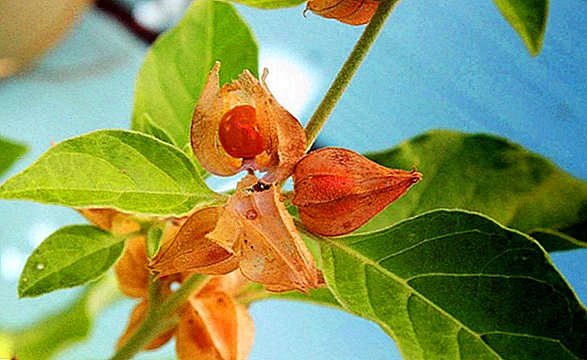 With overdose and long-term administration are possible:
With overdose and long-term administration are possible:
- feeling of depression and apathy;
- constant reluctance to rise in the morning, regardless of the quantity and quality of sleep;
- slow and slow response;
- lack of vitality;
- vomiting, indigestion.
If the reception of funds on the basis of ashvagandy is not controlled, the negative consequences of its reception can only be aggravated. Therefore, it is recommended to combine such preparations with other food additives and not exceed the recommended dose.
Ayurveda is a system of traditional medicine in India, a country that can be considered the birthplace of spices. According to Ayurveda, the list of spices that are obligatory to use includes turmeric, ginger, coriander, fenugreek, and cumin.
Contraindications for taking ashwagandha are:
- the appearance of allergic reactions;
- childhood;
- During pregnancy and breastfeeding;
- the presence of a stomach ulcer;
- thyroid dysfunction;
- pathological processes in the internal organs;
- increased intracranial pressure;
- incompatibility with some other drugs.

Did you know? In Ayurveda, the theory of the five elements, of which everything that surrounds us, including ourselves, predominates. These elements are air, water, earth, fire and ether.
Ashwagandha is really effective. She has earned recognition in many countries around the world. The range of indications for receiving funds based on it is quite wide, although there are downsides that make it wary. But it must be remembered that any product eaten by man, when used correctly, is beneficial, and, if neglected, can be harmful.



